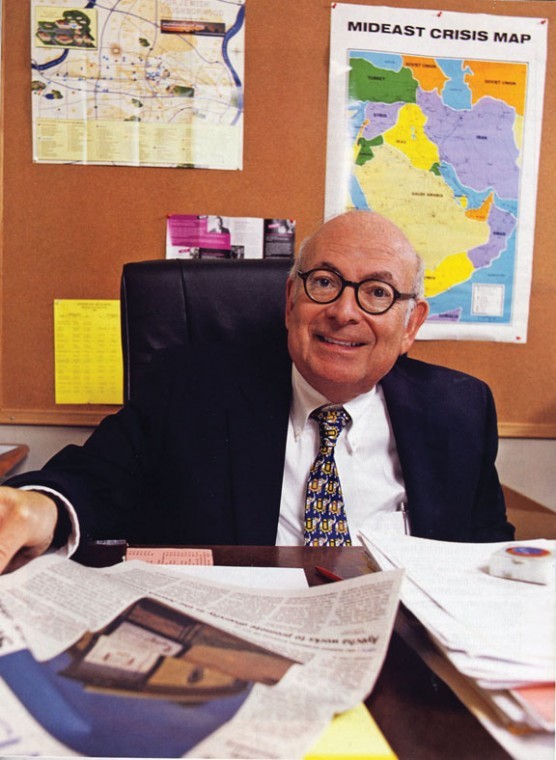Mergers and splits among local synagogues are nothing new
Published August 23, 2012
For the past few years, there has been a spate of stories in the Jewish Light, plus lots of informal discussion about possible mergers among local synagogues. There was extensive discussion between the leadership of Temple Israel and United Hebrew about a possible merger of the two large Reform congregations but eventually those talks were called off. There have been on-again-off-again and on-again discussions between two Conservative synagogues—Brith Sholom Kneseth Israel and Shaare Zedek Synagogue (see story in this week’s edition), which have in fact merged their religious schools for efficiency and cost-savings reasons. There was a formal merger between Beth Hamedrosh Hagodol Synagogue and Sha’are Chesed Shul into the U. City Shul-Beth Hamedrosh Hagodol-Sha’arei Chesed.
But “merger mania” is nothing new among local congegations in our community. When Joseph Philipson, a Polish American Jew from Philadelphia became the first known Jewish resident of St. Louis in 1807, to be followed soon by other members of his family and other Jews, the need soon became obvious for the establishment of a Jewish burial society and a formal synagogue. In 1837 the first minyan was held for United Hebrew Congregation, which began as an Orthodox “Polishe Shul,” and whose first spiritual leader, Rabbi Bernard Illoway, insisted that the synagogue conduct its rituals in conformity with a traditional interpretation of halacha, or Jewish law. Rabbi Illoway served for one year, starting in 1854, and was succeeded by Rabbi Henry Kuttner; they were the only two rabbis in St. Louis prior to the Civil War, according to the late local Jewish historian Walter Ehrlich.
ADVERTISEMENT
Ehrlich notes that a dissident faction within United Hebrew, which took the name Shaare Rachmonios (“Gates of Mercy”) in 1843, presented a “list of grievances” to the synagogue board, dealing mostly with burial fees, membership dues and procedural matters. The dispute was apparently resolved and the nascent Gates of Mercy Congregation was re-united with United Hebrew.
Meanwhile, two other local Jewish congregations came into being in this era: Emanu El (“God is With Us”) Congregation, not to be confused with the current Temple Emanuel, was organized in 1847, and became popularly known as the “Bavarian” congregation. That congregation suffered a loss of membership due to the cholera epidemic of 1849 and was reduced to discontinuing its weekly Shabbat services, getting together only for holiday worship. In 1849, Congregation B’nai B’rith (“Sons of the Covenant”) was formed; it had no connection with the national Order of B’nai B’rith that had been founded in 1843 in New York. Like Emanu El, B’nai B’rith also suffered loss of membership and financial pressures due to the cholera epidemic and the costs of maintaining its cemetery.
After numerous back and forth discussions, and concerns within both congregations about differences in religious practices and ethnicity, the leaderships of both decided it was in their mutual interests for the two synagogues to merge. A meeting was held on Oct. 17, 1852, which formalized the establishment of a United Israelitish Association to be known as the B’nai El Congregation. The merged congregation decided at the outset to formally associate with the American Reform Jewish movement within the Union of American Hebrew Congregations, now known as United Reform Judaism (URJ). Later, United Hebrew would formally join the UAHC as a Reform temple.
Then began an era of splitting off from the established synagogues into new congregations. A faction of B’nai El met in 1867 to form Congregation Shaare Emeth (“Gates of Truth”), which engaged its first spiritual leader, the controversial Rabbi Solomon Sonneschein, in 1869. He served Shaare Emeth until 1886, when a major dispute with his board of directors forced his resignation. A group of Shaare Emeth members who were steadfastly loyal to Rabbi Sonneschein resigned in solidarity with him and formed Temple Israel, which Sonneschein served until 1891.
ADVERTISEMENT
Beth Hamedrosh Hagodol was organized in 1879, and later started a cemetery at 9125 Ladue Road. In 1880, Chevra Kadisha and Sheeris Israel were organized, and seven years later Chesed Shel Emeth came into being, originally as a cemetery association. Chevra Kadisha would later merge with Tpheris Israel, now familiarly known as TICK Congregation, whose present location is in Chesterfield.
Two other previously separate congregations, Kneseth Israel and Brith Sholom entered into a formal merger as Brith Sholom Kneseth Israel (BSKI), and like Shaare Zedek, were originally Orthodox, but later became affiliated the Conservative movement.
More recently, a group of members of Congregation Shaare Emeth formed Temple Emanuel in 1954; a faction of B’nai El formed Congregation Kol Am, and B’nai Torah was organized to serve the small Jewish community in St. Charles County. B’nai Torah has gone through a number of near-splits and reconciliations among members who wanted to lean more towards traditional practices and others who leaned more towards Reform practices. A local Reconstructionist minyan later evolved into the Shir Hadash Reconstructionist Community, which has engaged Rabbi Lane Steinger as its spiritual leader.
It’s no small wonder if all of the above creations, splits and mergers among local congregations has your head spinning. On balance, it looks like historically we Jews in St. Louis have been more proficient at splitting apart than joining in mergers. But as economic pressures affect all Jewish synagogues and other organizations, we are likely to see more mergers in our future, such as the recent merger between the Saul Mirowitz Day School-Reform Jewish Academy and the local Solomon Schechter Day School into the Saul Mirowitz Jewish Community School, which could be a model for the future.
So you can see, regarding congregational merger talks, as it says in Ecclesiastes, there is indeed “nothing new under the sun.”
‘Cohnipedia’ is the online feature by Editor-in-Chief Emeritus Robert A. Cohn, chronicling St. Louis’ Jewish history. Visit Cohnipedia online at www.stljewishlight.com/cohn.














